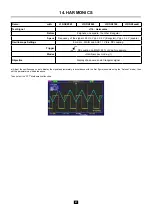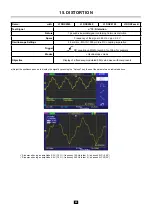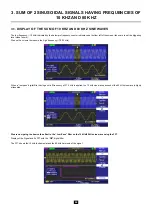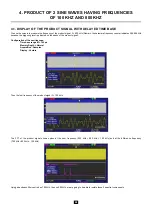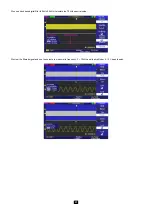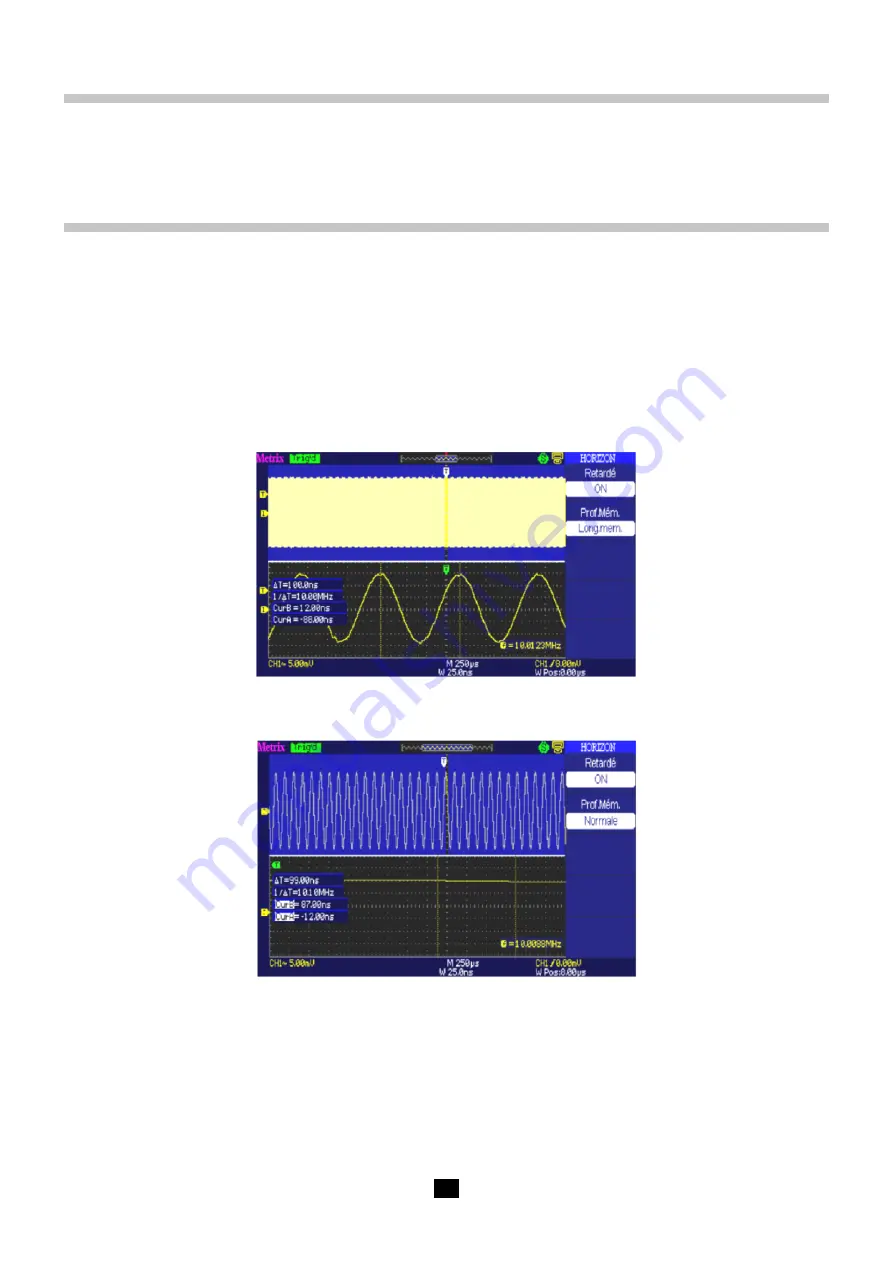
23
II. DEMONSTRATION GX1025 WITH DOX2000
1. USING THE GX1025 GENERATOR TO DEMONSTRATE THE
ADVANTAGES OF THE “LONGMEM” MEMORY DEPTH AND OF
THE DIGITAL FILTERS
1.1. INFLUENCE OF MEMORY DEPTH (LONGMEM OR NORMAL) ON THE SAMPLING
INTERVAL:
The sampling rate of the DOX2070B-DOX2100B oscilloscopes for the time base position
M = 250 µs/div-
for example- is
50 MSPS
with a memory Depth =
«LongMem»
and
2.5 MSPS.
If the Memory Depth =
«Normal»
, the minimum observable in DOTs will
therefore be, in this case, 20 ns when «LongMem» is active and 400 ns in «Normal» mode.
To see the effect of the
«LongMem»
function during a fine analysis of a signal, we are going to observe, in
«Delayed»
mode, a sinusoidal signal
having a frequency of
10 MHz
in DOTs display mode and
Vectors
with a main time base of
M = 250 µs/div.
and a Delayed time base of
W = 25
ns/div.
(there is a ratio of
10 000
between the
M
and
W
time bases).
When the LongMem function is activated, the 10 MHz sinusoidal signal is perfectly observable with the Delayed time base and a Zoom factor of
10000, because the 20 ns sampling interval is shorter than the 50 ns half-period of the sinusoidal signal.
But when the memory depth is “Normal”, the 10 MHz sinusoidal signal is no longer properly reconstituted, because the 400 ns sampling interval
is longer than the 100 ns period of the 10 MHz sinusoidal signal:
Conclusion :
By switching the memory depth from “Normal” to “LongMem”, we can record the same time interval with a recording
interval 20 times as fine, making possible a finer analysis of the signal, in “Delayed” mode, for example.













